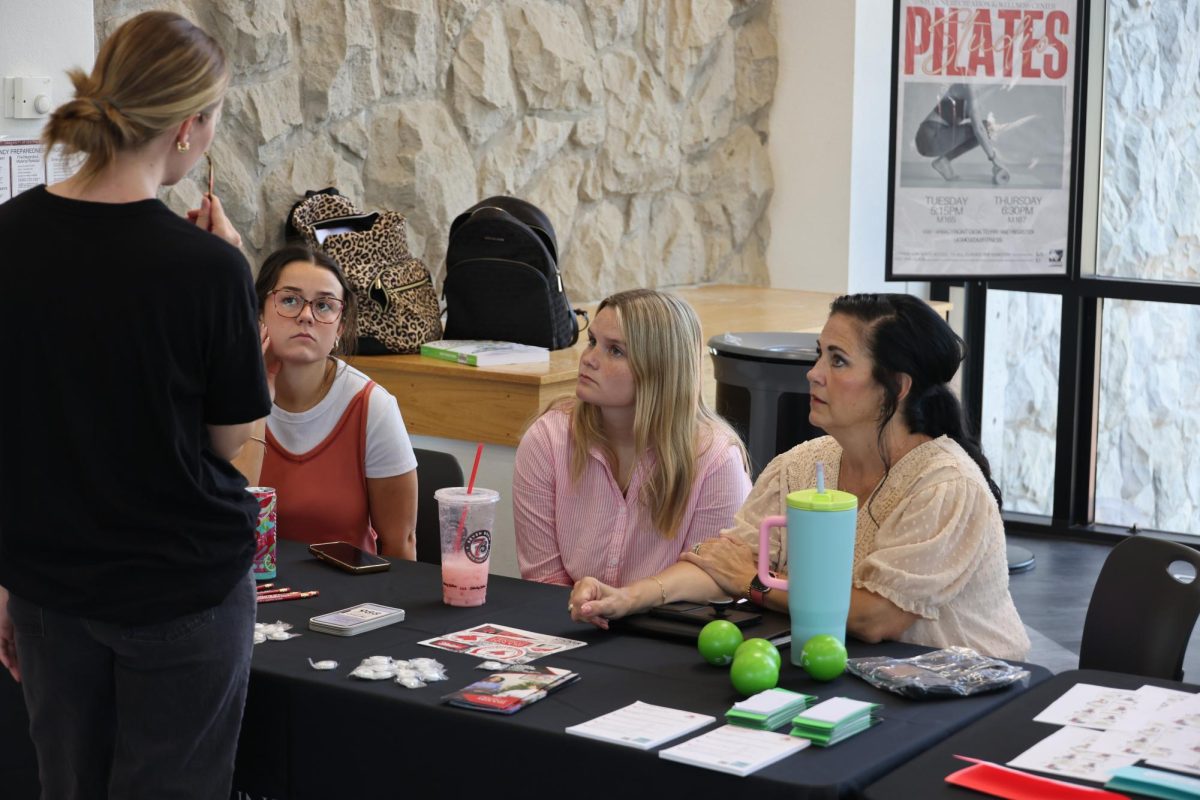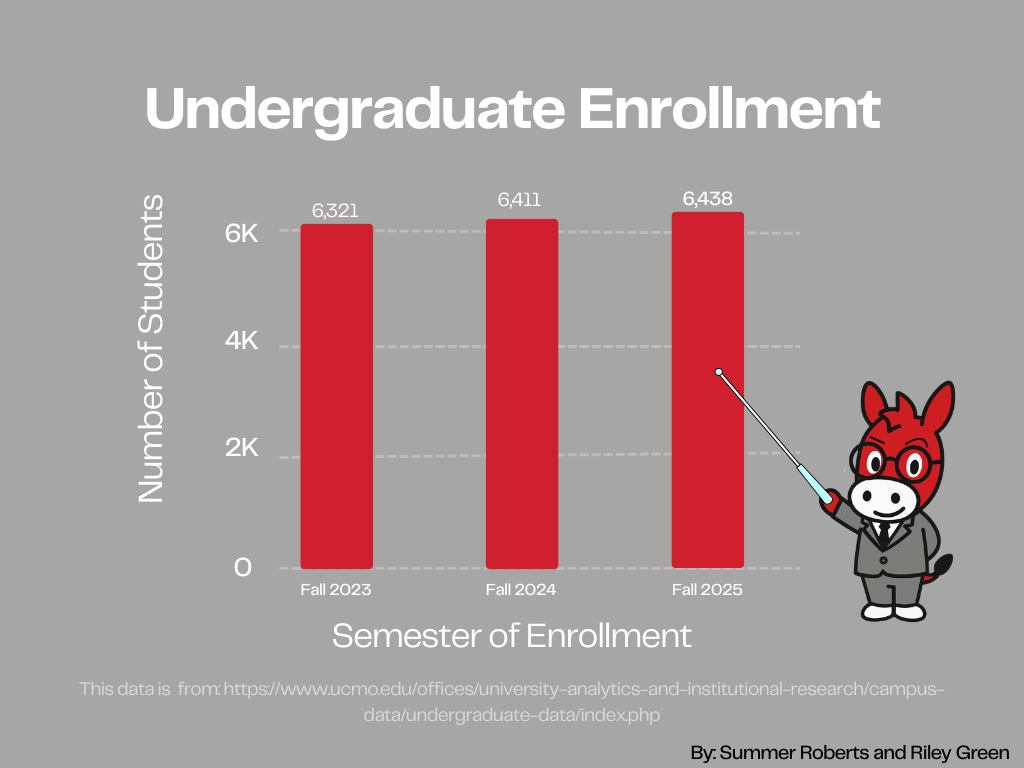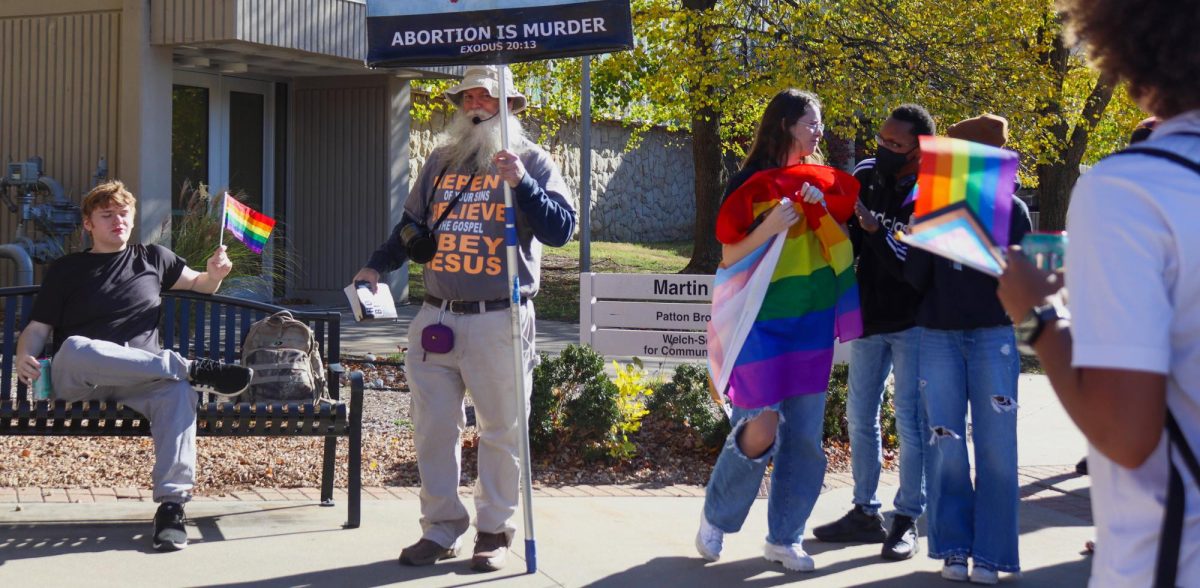By Leah Kemple and Kaitlin Brothers
UCM has joined several other Missouri schools in eliminating emergency blue-light pylons, or E-phones, due to the proliferation of cell phones.
Initially, UCM developed the Campus Eye mobile application in 2014 as a complement to the E-phones. The mobile app allows students to take photos or send text messages of incidents on campus to send to Public Safety.

However, the blue-light pylons were removed in December 2014 due to the proliferation of cell phones and the high cost of system improvements, according to Public Safety.
Capt. Bill Brinkley, assistant director of administration services, said 31 E-phones were removed outdoors and 24 were removed from inside buildings on campus.
Chief Scott Rhoad, director of Public Safety, said the cost to replace or upgrade the E-phones in 2014 was nearly $4,000 per structure, not including the installation cost.
David Davis, director of facilities, said removing the E-phones cost about $4,800.
Rhoad said since many of the structures were in places considered remote on campus, the university also had to pay $45 per month to CenturyLink for the telephone service for the remote E-phones.
He said in total, the approximate cost to upgrade the structures was about $140,000 with additional monthly and annual costs for operations.
“As technology developed and the proliferation of cell phones among all segments of the population increased, we decided to look at the use of the E-phones through a practical lens,” Rhoad said. “We looked at replacement costs for those phones that were no longer functional, monthly recurring costs and ongoing maintenance costs.”
Rhoad said the structures were about 25 to 30 years old and were having maintenance and hardware issues. He said the phones that were no longer functional could not make calls, receive calls or both.
“We said, ‘You know what? Maybe we need to look and see: Is the usefulness and the reason that the phone is here…still pertinent today as it was 25 years ago?’” Rhoad said.
Although the app Campus Eye is promoted by Public Safety and University Relations officials, only 500 people have downloaded the app.
“That’s not even a fraction of who needs to be signed up,” said former UCM President Chuck Ambrose in April. “It becomes only as powerful as people are willing to use it. And if you wait until you need it, it’s probably too late.”
The E-phones were previously located close to sidewalks on campus and were designed to alert Public Safety with the push of a button. When used, Public Safety tracked the location of which structure was pressed and responded to that area.
When Public Safety officials began discussing the need for the structures, they first went to Shari Bax, vice provost for Student Experience and Engagement and an adviser to the Student Government Association.
Bax said the initial conversation with Public Safety was whether to replace the broken structures on campus or eliminate them. She said to some extent, the structures were an outdated technology and would have been expensive to upgrade and replace them.
She said Public Safety officials showed call logs from the structures, showing that the only calls they were getting at the time were from Safe Team members testing them or students requesting a safe escort.
Bax and Kim Vansell, the previous director of Public Safety, then went to the Student Government Association to discuss removing the E-phones.
“Chief Vansell and I decided we should approach the student leaders about it because the fact that we didn’t want there to be a perception that we were not concerned about student safety,” Bax said. “So we wanted to talk to them about what their comfort level was with doing away (with the E-phones).”
Bax said the campus was notified of these meetings through posters and SGA’s Twitter, and two students opposed eliminating the structures. She said those students did not express substantive opposition, and that the opposition was largely based on the fact that the E-phones were a recognized feature on campus at the time.
“It was generally supported,” she said. “At that point in time, we had instituted the app that you could use. Students didn’t think it was a big deal to go away from the phones simply because they had a cell phone. Public Safety was at their fingertips.”
The E-phones were not always used properly, according to Public Safety. Rhoad said during the last 10 years of the E-phone’s existence, the calls were mostly pranks from students or visitors.
Rhoad said the most use they got out of the E-phones were to report injuries during intramural sports with groups using East Field (behind Foster Knox) or when someone locked keys in their car. However, data regarding calls initiated from the E-phones was unavailable.
“Although we did not keep track of that information, a computer search of our records as far back as 2005 only found seven calls that stated the initial call was received from an E-phone. Of those seven calls, five were emergency aids and two were prank calls,” Rhoad said. “The only exception I can think of is in the case of people getting stuck in an elevator. However, those phones are still operational.”
Bax said when UCM made the decision to remove the E-phones, the Student Engagement and Experience office did not get any complaints or concerns regarding the removal.
“And I would not be able to point to any incident where we felt the outcome would have been different if we had the phones,” she said. “If I had seen that we were getting those kinds of calls (emergencies) on the phones, I would have never even broached the subject to SGA to begin with.”
The Campus Eye app has been at UCM for about five years. Public Safety officials encourage students to use the app to report campus crime or anything out of the ordinary happening on campus.
Brinkley said although people believe the Campus Eye app replaced the E-phones, the E-phones were simply phased out due to cell phones.
Brinkley said Campus Eye has supplemented security on campus and provided new tools to anonymously report crime through photos or text.
“The blue-light phones (E-phones) really became antiquated,” he said.
Ron Coleman, dispatcher at Public Safety, said there were 126 reports last year with Campus Eye with 60 percent of those being facility related. About 30 reports fell under police jurisdiction and about 20 of them were more urgent police responses.
Ambrose said the Campus Eye app was developed in 2014 by Rob Sweeny, a UCM alumnus. The app is available on iPhone and Android devices.
“You ask the question of ‘Why is that different from hardwire blue light technology on campus?’ Well, because you have it all the time,” Ambrose said.
Brinkley said the app evolved from Textcaster, the service UCM uses to communicate with the campus community.
There are several campuses in Missouri that have taken similar action as UCM in removing the E-phones.
Clarence Green, the chief of police at Northwest Missouri State University in Maryville, said Northwest removed their E-phones years ago.
“They had less than three calls a year and none were emergency calls,” Green said. “With the wide use of cell phones, they were underutilized.”
Trevor Brown, the chief of police at Missouri Western State University in St. Joseph, said their E-phones were removed from campus about a year ago.
“They were not utilized very much at all prior to their termination,” Brown said. “We have had no calls for police response or service from the emergency phone or towers in several years.”
Brown also said the increase in cell phone usage has changed the communication across Missouri Western’s campus.
“The campus community and public, in general, are more connected now than we have ever been before,” he said. “In addition, we have not seen any decrease in the number of police calls without the emergency towers being in service or in place.”
The University of Missouri is one of the few universities in the area that continues to utilize E-phones on campus. Many of the times the phone was used, the call resulted in a “gone-on-arrival” report, false alarm or no report at all, according to University of Missouri records.
Ambrose said campus safety measures will continue to grow with new Campus Eye app, with features such as “find me,” where Public Safety can identify the location of the user when necessary.
He said UCM plans to implement a new annual campaign to promote the Campus Eye app and how to fully utilize it.
Interim President Roger Best said the Campus Eye app is a critical tool for students to report concerns or incidents, and that it is an evolution of technology, since most students have a cell phone.
“It’s surprising to me that more of our students don’t download the app and take advantage of the app’s ability,” Best said. “Why don’t more students download the Campus Eye app? I’m not sure. We certainly do our part to publicize that it’s out there. We want more students to download Campus Eye. We want more students to take advantage of that.”
Technology, cell phones phase out need for blue-light pylons
Written by Kaitlin Brothers
August 21, 2018
0
More to Discover











